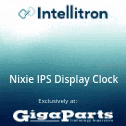Just say NO! to Winlink expansion!
Discussion in 'Amateur Radio News' started by KH6TY, Apr 21, 2005.
- Thread Status:
- Not open for further replies.
Page 28 of 35
Page 28 of 35
- Thread Status:
- Not open for further replies.










